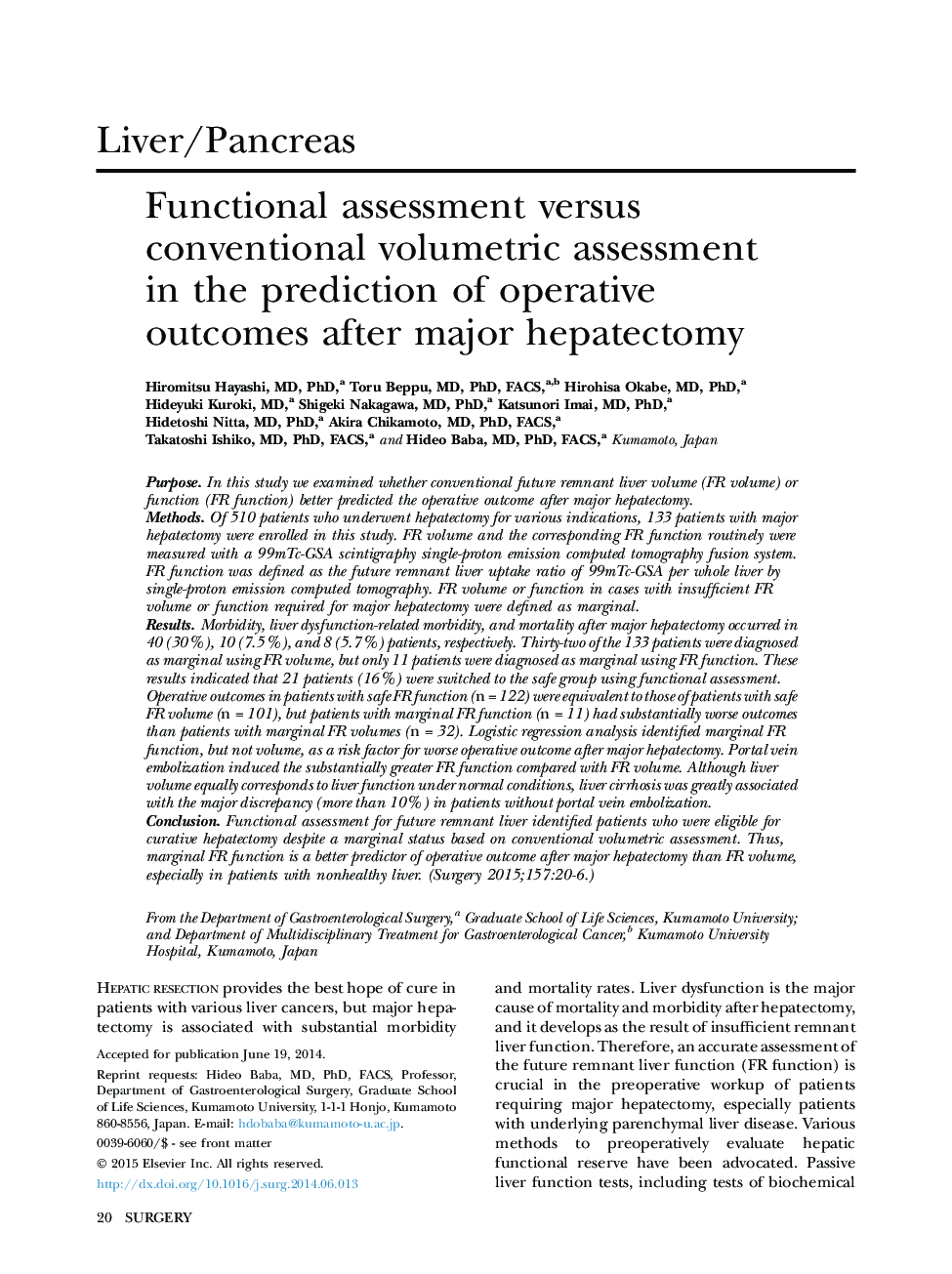| Article ID | Journal | Published Year | Pages | File Type |
|---|---|---|---|---|
| 4307304 | Surgery | 2015 | 7 Pages |
PurposeIn this study we examined whether conventional future remnant liver volume (FR volume) or function (FR function) better predicted the operative outcome after major hepatectomy.MethodsOf 510 patients who underwent hepatectomy for various indications, 133 patients with major hepatectomy were enrolled in this study. FR volume and the corresponding FR function routinely were measured with a 99mTc-GSA scintigraphy single-proton emission computed tomography fusion system. FR function was defined as the future remnant liver uptake ratio of 99mTc-GSA per whole liver by single-proton emission computed tomography. FR volume or function in cases with insufficient FR volume or function required for major hepatectomy were defined as marginal.ResultsMorbidity, liver dysfunction-related morbidity, and mortality after major hepatectomy occurred in 40 (30%), 10 (7.5%), and 8 (5.7%) patients, respectively. Thirty-two of the 133 patients were diagnosed as marginal using FR volume, but only 11 patients were diagnosed as marginal using FR function. These results indicated that 21 patients (16%) were switched to the safe group using functional assessment. Operative outcomes in patients with safe FR function (n = 122) were equivalent to those of patients with safe FR volume (n = 101), but patients with marginal FR function (n = 11) had substantially worse outcomes than patients with marginal FR volumes (n = 32). Logistic regression analysis identified marginal FR function, but not volume, as a risk factor for worse operative outcome after major hepatectomy. Portal vein embolization induced the substantially greater FR function compared with FR volume. Although liver volume equally corresponds to liver function under normal conditions, liver cirrhosis was greatly associated with the major discrepancy (more than 10%) in patients without portal vein embolization.ConclusionFunctional assessment for future remnant liver identified patients who were eligible for curative hepatectomy despite a marginal status based on conventional volumetric assessment. Thus, marginal FR function is a better predictor of operative outcome after major hepatectomy than FR volume, especially in patients with nonhealthy liver.
